This spring when things began to shut down, and I realized I would be working from home for awhile. I decided to spend some money at the garden center and put in a butterfly garden in our back yard.
I went to the nursery and bought an assortment of flowering plants, making sure to buy several plants of the source food for Monarch Butterfly, Milk Weed.

After a month or so of my garden growing like crazy, but not a single butterfly to be found, I decided I needed to do some research on what I could do to encourage butterfly to come and hang out with me.
There are dozens of places where you can buy butterfly eggs/caterpillar to raise in the classroom, but many of these commercial breeders are not taking care of their butterfly to ensure that they are not sending out diseased insects. But eventually I found one that I thought was as safe as possible and ordered 10 monarch eggs/caterpillars. Due to the timing, you don't get a choice, they send what they have. Two days later, these guys arrived at my door.
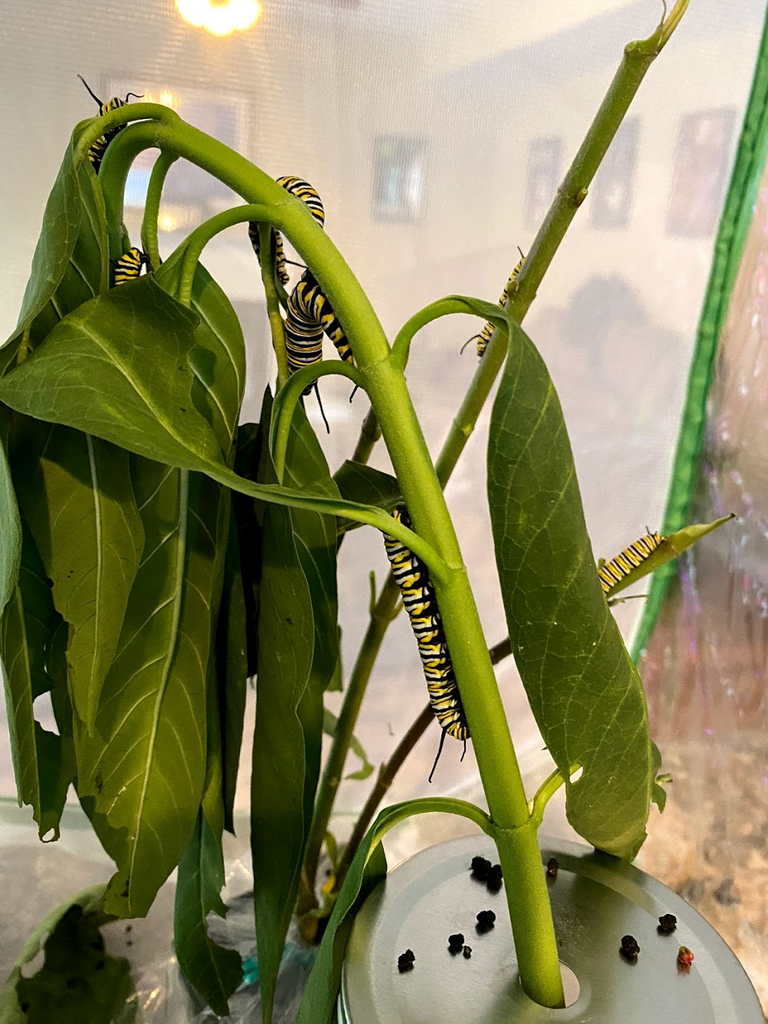
I ended up with 13 caterpillars. The host plant they came on was pretty much gone, they eat a ton. But I was prepared for that with my butterfly garden. I got a fresh clipping and put it in my enclosure with the host plant, and these guys quickly moved over to the new plant and began chewing on the leaves.
Caterpillar eat.... a lot. I was impressed as I had to put a fresh clipping in with them each day for four days. But on the third day, things started happening. Some of the monarchs stopped eating, and made their way to the top of the enclosure, looking for a place to make their chrysalis.
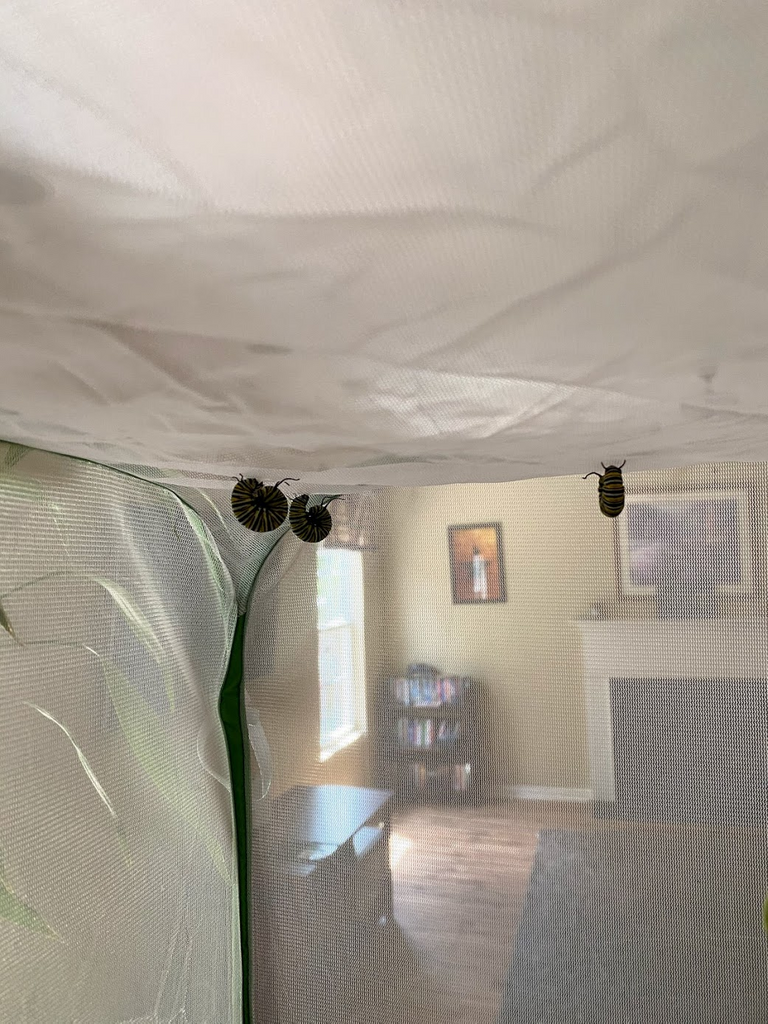
These guys would find a place on the roof and just seem to sit there for a day or so, then they would go in to a J shape, about 24 hours after they went in to the hanging J shape they formed up their Chrysalis.
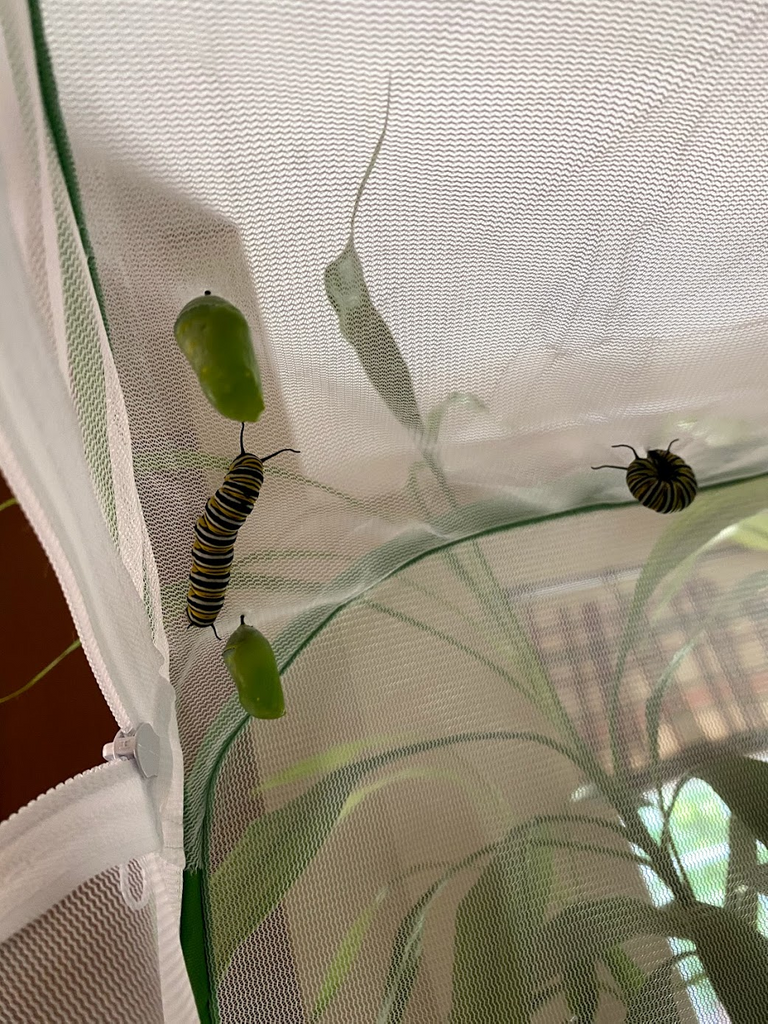
An interesting thing about the Monarch, it forms it's cocoon by shedding it's own skin (which it has done several times during it's life as it got bigger) the Chrysalis is inside of them the whole time. Most other caterpillar and moths will create their cocoon out of the things around them, this is something that sets the monarch apart.
The monarch is not an endangered species. However, the North American Migration trail of the monarch is in trouble. Fewer monarchs are making it down to Mexico each year, which means fewer coming back in the spring. Most of this has to do with man's continued destruction of the land for development, and taking away the milk weed these beautiful butterfly need. Milk Weed is the only plant that the Monarch Caterpillar will eat. So if there is no milk weed, there will be no monarch.
Even with Milk Weed, it is estimated that only about 3% of the eggs that are laid in the wild make it to adulthood. And that is where breeding programs come in. By enclosing the egg/caterpillar, we give these creatures the best chance of surviving the most delicate phase of their lives, and the hope for them to make the trip down to Mexico.

I now have 12 Chrysalis, with one last Caterpillar J hanging, so he will be a Chrysalis tomorrow. Then it is just a waiting game until we see the Beautiful Monarch start to emerge.
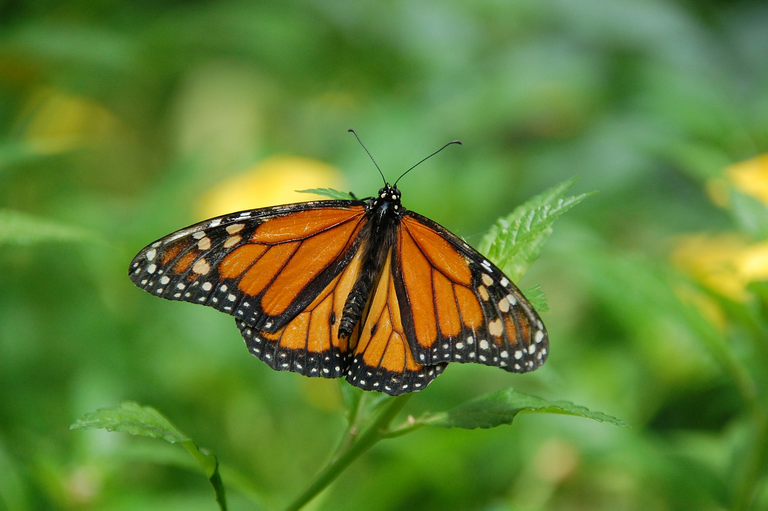
But then what happens? I can't keep 13 Monarch Butterfly in a 2 foot enclosure. These guys will not migrate, they are one of the last sets of butterfly that will spend their entire life cycle in one spot. But the next generation, the eggs these 13 would lay in the first week or two of August might be migratory. That means I am going to have to change my tactics.
Once these Monarchs begin to emerge, I want to release them in to my butterfly garden, but I want them to stick around. It is only about a week after emerging from their Chrysalis that the Monarch begins laying new eggs. So if I can keep them in a known space for a week, I should be able to get some eggs, and then let this first generation of Monarch go their own way. Hopefully they will stick around, but once I release them, they are up to their own devices, not to mention they are prone to being eaten by the local birds.
So, my solution comes in the form of a Mosquito Net hung over the butterfly garden. There are many nectar producing plants, and plenty of Milk Weed for them to lay eggs on, so they should be comfortable in this space for a week or so, until I can confirm I have eggs for the next generation.
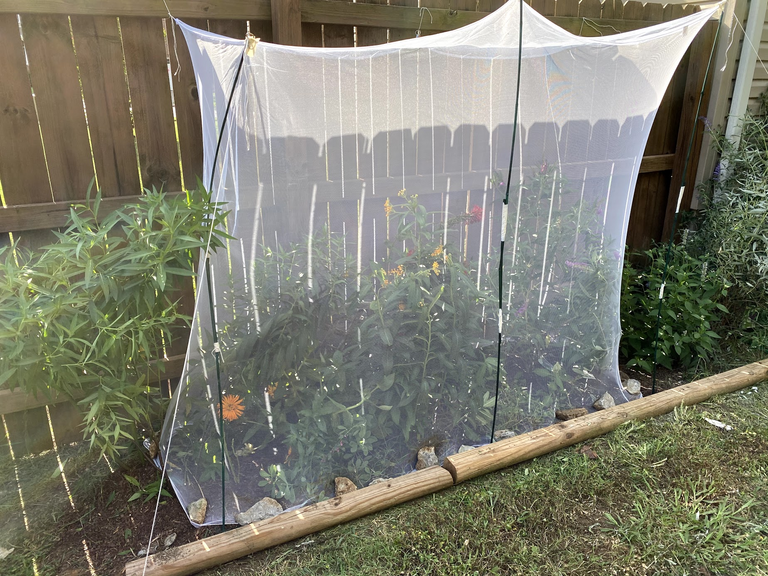
So here's the thing about the Monarch... since we are entering the phase where they will begin to migrate, I won't be able to bring the eggs of the second generation inside. There is something about the environment of an indoor space versus being outside that keeps the monarch from getting the environmental cues they require to head off on their long Migration. They may get the cue to leave where they are, but somehow they lose their sense of direction and do not head south. Even moving the Chrysalis inside briefly while the butterfly is transforming interrupts the cues. So I will need to make sure I let the next generation live their entire lives outdoors.
The mosquito net will not keep some of the predators out that could eat the eggs/larvae, so I will attempt to collect a handful of eggs and raise them in my small enclosure, but outside, so that I can ensure a second generation of butterflies even if none of the rest of the eggs in the garden survive.
I'll repeat that cycle as many times as is needed until the last generation of the season head south, sometime around October. If I do it all right, some of those butterfly may find their way back to my garden in the spring, and we can work on ensuring that Monarch Butterfly are a constant summer companion for us.